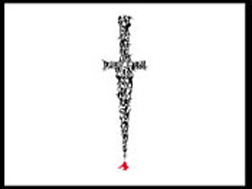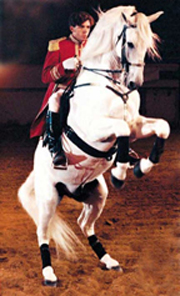Mark Morris's "Orfeo ed Euridice"
by Susan Reiter
 Mark Morris’ new production of Gluck’s gorgeous 1762 opera is filled with images of eloquent simplicity. Not for a moment did the stage picture feel spare, but there was also not a moment of excess, nothing to distract from the emotional momentum of the work. The presiding concept was that of grace — an ennobling purity and restraint. Morris employed 18 members of his company (plus four men from the Met’s dance roster) not only for spirited, elegantly crafted sequences during the score’s extensive dance music, but also in resonant choral patterns to echo and amplify Orpheus’ sufferings. READ MORE
Mark Morris’ new production of Gluck’s gorgeous 1762 opera is filled with images of eloquent simplicity. Not for a moment did the stage picture feel spare, but there was also not a moment of excess, nothing to distract from the emotional momentum of the work. The presiding concept was that of grace — an ennobling purity and restraint. Morris employed 18 members of his company (plus four men from the Met’s dance roster) not only for spirited, elegantly crafted sequences during the score’s extensive dance music, but also in resonant choral patterns to echo and amplify Orpheus’ sufferings. READ MORE
New York City Ballet's Spring Season
"Romeo + Juliet"
Wherefore art thou Juliet?
by Tom Phillips
 One thing that Peter Martins has in common with George Balanchine is an eye for beautiful young ballerinas, and boldness in taking risks with them. If the buzz is indeed back at New York City Ballet, as the ads claim, it is almost always about a girl in or barely out of her teens, with technique honed to a keen edge by Balanchine’s hand-picked faculty at SAB, and the angelic air of one who has grown up in the cloister of a ballet studio. The latest of this winning type is 18-year-old Erica Pereira, a company apprentice who leaped into the leading role in Martins’ “Romeo + Juliet” and scored a personal triumph, even with this star-crossed production around her neck. READ MORE
One thing that Peter Martins has in common with George Balanchine is an eye for beautiful young ballerinas, and boldness in taking risks with them. If the buzz is indeed back at New York City Ballet, as the ads claim, it is almost always about a girl in or barely out of her teens, with technique honed to a keen edge by Balanchine’s hand-picked faculty at SAB, and the angelic air of one who has grown up in the cloister of a ballet studio. The latest of this winning type is 18-year-old Erica Pereira, a company apprentice who leaped into the leading role in Martins’ “Romeo + Juliet” and scored a personal triumph, even with this star-crossed production around her neck. READ MORE
One Austria: Disparate Outlets for Dance
A Letter about Vienna and Salzburg
by George Jackson
 To see the most elegant dancing in Austria, the prerequisite is patience. It takes time to for the Lipizzaner stallions to warm up and although this period may be considerable, it can be savored. There’s a style and pulse even to the ambulatory trot as the horses and their uniformed riders enter the Spanish Riding School’s baroque amphitheater. Crystal chandeliers are suspended from the ceiling, the walls of the hall are as white as the hair of the fully mature stallions (younger animals are darker shades) and turf the color of coffee with cream covers the arena floor. Four thin legs must sustain proportionally more weight than a human dancer’s pair, so doing something as bravura as courbettes or caprioles right away is unwise. READ MORE
To see the most elegant dancing in Austria, the prerequisite is patience. It takes time to for the Lipizzaner stallions to warm up and although this period may be considerable, it can be savored. There’s a style and pulse even to the ambulatory trot as the horses and their uniformed riders enter the Spanish Riding School’s baroque amphitheater. Crystal chandeliers are suspended from the ceiling, the walls of the hall are as white as the hair of the fully mature stallions (younger animals are darker shades) and turf the color of coffee with cream covers the arena floor. Four thin legs must sustain proportionally more weight than a human dancer’s pair, so doing something as bravura as courbettes or caprioles right away is unwise. READ MORE
San Francisco Letter 28
"Don Quixote" and Muriel Maffre's Farewell
by Rita Felciano
 Every time I think of “Don Quixote,” I never want to see it again. Minkus’ oom-pah-pah beats are difficult to endure for close to three hours. Yet every time I do go to see the ballet, I am charmed by many of his lovely melodies — a few of them almost Rossini-esque. And, ah yes, there is the matter of the dancing, of course. Much of it is plain show-stopping, but much of it also so very fine and refined, with roles both large and small, for the very young and the character dancers. Like the “Nutcracker”, this Russian-Spanish cousin celebrates a ballet company as a mini-reflection of a democratic society. For all their differences, both works’ classicisms celebrate family, young love and a bourgeois sense of stability, with room for ancien regime survivors such as Drosselmeyer and the Don. READ MORE
Every time I think of “Don Quixote,” I never want to see it again. Minkus’ oom-pah-pah beats are difficult to endure for close to three hours. Yet every time I do go to see the ballet, I am charmed by many of his lovely melodies — a few of them almost Rossini-esque. And, ah yes, there is the matter of the dancing, of course. Much of it is plain show-stopping, but much of it also so very fine and refined, with roles both large and small, for the very young and the character dancers. Like the “Nutcracker”, this Russian-Spanish cousin celebrates a ballet company as a mini-reflection of a democratic society. For all their differences, both works’ classicisms celebrate family, young love and a bourgeois sense of stability, with room for ancien regime survivors such as Drosselmeyer and the Don. READ MORE
David Parker and the Bang Group
by Susan Reiter
 David Parker’s new work was originally to have been titled after the name of a park in Bruges, Belgium, which served as a major inspiration. But he ended up re-titling it with a quote from “Macbeth”’s famous soliloquy of resignation (“Life’s but a Walking Shadow, a poor player/That struts and frets his hour upon the stage,/and then is heard no more”). There was certainly nothing overtly doom-laden, despite some introspective and melancholy moments, about the piece, which does last exactly an hour. But there is plenty of playful cooperation, childlike trust and amiability in the movement and ongoing sound production the eight dancers perform. READ MORE
David Parker’s new work was originally to have been titled after the name of a park in Bruges, Belgium, which served as a major inspiration. But he ended up re-titling it with a quote from “Macbeth”’s famous soliloquy of resignation (“Life’s but a Walking Shadow, a poor player/That struts and frets his hour upon the stage,/and then is heard no more”). There was certainly nothing overtly doom-laden, despite some introspective and melancholy moments, about the piece, which does last exactly an hour. But there is plenty of playful cooperation, childlike trust and amiability in the movement and ongoing sound production the eight dancers perform. READ MORE